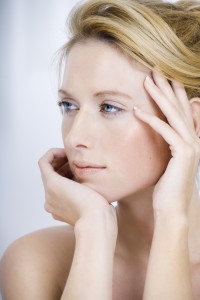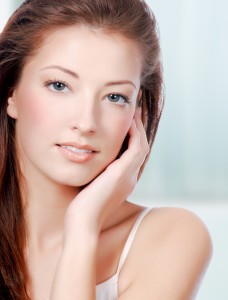Posted by
admin on Feb 5, 2011 in
How Too |
3 comments If you are attempting to use skin bleaching products on large areas of skin, you will probably need to use those with weaker compositions. In addition, if you are bleaching certain areas such as under the arms or around the genital area, the skin may be more sensitive in these areas, which will require using a weaker solution.
If you are attempting to use skin bleaching products on large areas of skin, you will probably need to use those with weaker compositions. In addition, if you are bleaching certain areas such as under the arms or around the genital area, the skin may be more sensitive in these areas, which will require using a weaker solution.
If you decide that skin bleaching is right for you, you have a choice of using commercial products or those you make yourself. If you use a commercial product, you will probably be given a set of instructions to go along with it. If this is the case, then how to perform skin lightening in this situation is simply a matter of carefully following those instructions.
Following those instructions means not skipping any of the steps. For example, if the directions say to wear gloves when applying the skin bleaching solution, then you should do that. Not only will this prevent you from over bleaching the skin on your hands, but it will also keep your skin from becoming damaged from prolonged contact with the solution.
For both commercial products and those you make yourself, clean skin is a must. So, make sure you wash any skin that you will be treating well and pat it dry.
Once your skin is dry and you are ready to begin, mix the ingredients in your skin bleaching product. This may not be necessary if you are using a commercial product; however, if you are using one made with natural ingredients, you may have to wait until right before you are ready to apply it before mixing them.
If no mixing is required, simply smooth the product on the areas you wish to lighten. Leave it on or rinse it off, depending on what your instructions say. (You will most likely have to rinse off products you make yourself.)
If you are using products you make yourself, using natural ingredients (such as milk, yogurt, lemon juice, even small amounts of bleach or ammonia), you need to know a few things about how to apply these skin bleaching products. The first, and most important one, is to make sure the product does not get in your eyes. This is also true for commercial products, but in the case of natural ones, this can be very dangerous, especially if you are using caustic substances such as lemon juice or bleach or ammonia.
If you do use bleach or ammonia, make sure you add only the smallest amount possible, especially where bleach is concerned, and make sure you dilute the solution well. It’s best to avoid using these products if you can. When using “home made” products, again start with skin clean. If necessary, stir the mixture again before applying it to your skin with clean fingertips. Leave on for approximately ten minutes if using one with bleach or ammonia, or up to thirty minutes if using one without these ingredients. Then rinse your face well and pat it dry.
 nt uses for skin bleaching products. These can include fading or even getting rid of age spots (sometimes called “liver” spots) and minor blemishes, such as small areas of melasma (a discoloration of the skin caused by pregnancy or by over-exposure to natural or artificial sunlight) or birthmarks that aren’t too dark. It may also be possible to lighten freckles to some extent; however, as these are hereditary, there may not be much that can be done in this area.
nt uses for skin bleaching products. These can include fading or even getting rid of age spots (sometimes called “liver” spots) and minor blemishes, such as small areas of melasma (a discoloration of the skin caused by pregnancy or by over-exposure to natural or artificial sunlight) or birthmarks that aren’t too dark. It may also be possible to lighten freckles to some extent; however, as these are hereditary, there may not be much that can be done in this area.







